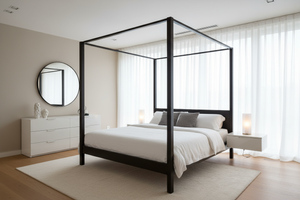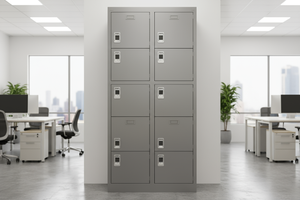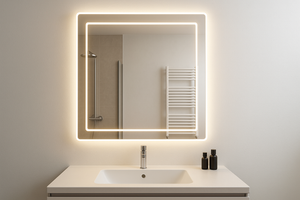Projector Screens Explained: Types, Sizes & Setup Tips

Projector screens are essential for creating an immersive viewing experience. They enhance image quality and provide a dedicated surface for projection.
Choosing the right screen can be overwhelming with so many options available. From fixed frame to electric projector screens, each type offers unique benefits.
Understanding the different types, sizes, and setup tips is crucial. It ensures you select the best screen for your needs and space.
This guide will help you navigate the world of projector screens. Discover how to optimize your viewing experience with the perfect screen choice.
What Is a Projector Screen and Why Use One?
A projector screen is a specially-designed surface that displays projected images. It is crucial for achieving superior picture quality. Unlike a bare wall, a projector screen provides a flat, uniform surface.
Using a projector screen has distinct advantages. It enhances color accuracy and sharpness. The screen's material is optimized to reflect light effectively.
Explore our full range of projector screens to find the perfect fit for your setup, whether it’s for movies, presentations, or gaming.
Benefits of Using a Projector Screen:
-
Improved image brightness and clarity
-
Enhanced color contrast and fidelity
-
Designed for optimal viewing angles
Investing in a projector screen can transform your visual experience. Whether for home theaters or business presentations, it is a worthwhile addition.
Types of Projector Screens
Choosing the right projection screen is important for the best visual experience. Different types meet various needs and settings. Understanding these can help guide your choice.
Some common types of projector screens include:
-
Fixed Frame Screens
-
Electric Projector Screens
-
Manual Pull-Down Screens
-
Portable and Outdoor Screens
-
Specialty Screens (ALR, Acoustic, etc.)
Each type has its benefits and drawbacks. Fixed frame screens offer a permanent and high-quality display option. Electric projector screens add convenience with motorized control. Portable screens are ideal for on-the-go use.
Manual pull-down screens provide a budget-friendly solution. Specialty screens cater to specific environments and needs, like reducing ambient light impact. Consider your specific usage needs when selecting a screen type. A blend of functionality, setup, and cost will help achieve the best results.
Fixed Frame Screens
Fixed frame screens provide a steady and flat display surface. They're perfect for dedicated rooms. Tensioned surfaces help maintain ideal picture quality. Once installed, they're set in place, offering a permanent setup.
Electric Projector Screens
Electric projector screens bring ease with their motorized function. Controlled with a remote, they fit well in stylish home theaters. Their smooth operation makes them a user-friendly choice. Electric screens often offer high-quality image displays.
Manual Pull-Down Screens
Manual pull-down screens are budget-conscious and versatile. These screens work well in multipurpose spaces. Simple to operate, they can be retracted when not in use. This type is a practical solution for homes and offices.
Portable and Outdoor Screens
Portable and outdoor screens are lightweight and handy. Quick setups make them suited for outdoor movie nights. They're easy to transport, ideal for anyone needing flexibility. These screens enable you to project anywhere, anytime.
Specialty Screens (ALR, Acoustic, etc.)
Specialty screens serve unique purposes. Ambient light rejecting (ALR) screens maintain quality in bright rooms. Acoustic screens let sound pass through, perfect for speaker setups. These types offer tailored solutions to specific challenges.
Looking to build a complete media room? Check out our curated home entertainment collection for everything you need.
Choosing the Right Size and Aspect Ratio
Selecting the correct screen size is vital for optimal viewing. It's influenced by your room's dimensions and the projector's capabilities. A screen that's too large or small can ruin your experience.
Consider the viewing distance when deciding on size. Ideally, the distance should be 1.5 to 2.5 times the screen's width. This ensures comfortable viewing without eye strain. Ensure the screen fits your projector's throw distance specifications.
Aspect ratio is another critical factor. Common ratios include:
-
16:9 for widescreen home theaters
-
4:3 for educational or business presentations
-
2.35:1 for a cinematic feel
Different ratios cater to different content types and settings. Matching the aspect ratio of your projector and source material maximizes the viewing quality. A well-matched screen size and aspect ratio create a seamless and immersive experience. Consider both aspects carefully for the best results.
For a hassle-free viewing experience, the 150" Electric Motorised Projector Screen comes with a remote control and delivers cinema-quality visuals at home.
Screen Materials and Gain Explained
The screen's material affects image quality. Different materials offer unique viewing benefits. Choosing the right one depends on your specific needs and environment.
Common screen materials include:
-
Matte white for versatility and even lighting
-
Glass bead for high gain and brighter images
-
High contrast gray for improved blacks in bright rooms
Gain measures a screen's reflective properties. Higher gain offers brighter images but at the cost of a narrower viewing angle. Low gain materials maintain color accuracy over wide angles, perfect for larger audiences.
Understanding your space's lighting can guide material selection. A screen tailored to your environment maximizes viewing satisfaction and impact.
Setup Tips for the Best Viewing Experience
Proper setup ensures you enjoy your projector screen to the fullest. Start by selecting the right location. Position your screen where it’s easily viewable by your audience, avoiding direct light sources.
Ensure your screen is level and properly tensioned. This prevents wrinkles and maintains a smooth surface for clear images. Consider using a laser level to perfect the alignment.
Pay attention to throw distance. Match your projector’s capabilities with the room’s dimensions. Make sure the image fills the screen without spilling over the edges.
Finally, adjust your room’s lighting. Use curtains or dimmers to reduce ambient light, enhancing contrast and image clarity. Getting these basics right transforms your viewing experience into a truly immersive one.
Maintenance and Care for Your Projection Screen
Regular maintenance of your projector screen ensures long-lasting performance. Clean the screen surface with a soft, dry cloth to remove dust. For stubborn stains, use a mild soap solution.
Avoid harsh chemicals or abrasive tools. They can damage the screen material. Additionally, check for and tighten any loose mounts regularly. This keeps your setup secure and stable over time.
Conclusion: Picking the Perfect Projector Screen
Choosing the right projector screen can greatly enhance your viewing experience. Consider your room's setup, your screen needs, and budget.
With the right screen, enjoy stunning visuals and create memorable viewing moments. Take your projection setup to the next level.
- Tags: Projector Screens









